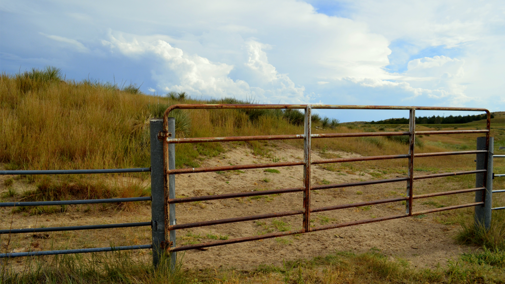Pasture Leasing Rates
Pasture rental rates are something many have questions about. By looking at changes in the cattle market prices, productivity factors influencing rental rates, stocking rates, expectations for rainfall and other factors, we can estimate pasture rates will likely be similar to 2023 or slightly higher, depending on the region.
Establishing fair pasture rates can be a challenge. The most popular method is using “current market rates” based on average county rental rates for each county or region of the state. The USDA National Agricultural Statistics Service provides annual average county pasture values each August. In 2023, Nebraska regional rates ranged from $10.50/acre in northwest to $48.50/acre in south-central to $88/acre in the northeast.
The UNL Center for Agricultural Profitability also provides updated pasture rental values in the Nebraska Farm Real Estate Market Survey. Values are provided as cash rental rates along with cow-calf pairs and stocker rates. Preliminary results for the UNL survey come out in March and the final report comes out in June. For 2023 rates, visit the Nebraska Farm Real Estate website.
Those in severe drought-impacted regions might consider pricing leases based on grazing animal unit months (AUM’s) OR rent per head per month of grazing, rather than flat rates per acre or cow-calf pair. A clause might be added to cover livestock water in case water sources go dry. Typically, pasture weed control is a landlord expense, but if the pasture was overgrazed due to drought, weed control costs might be shared between landowners and tenants. Finally, stocker or feeder cattle producers might consider a rent per pound of gain method for example, the tenant might pay 50 to 60 cents to the pasture owner for each animal pound gained during the pasture grazing.
More educational resources such as the Nebraska Extension Budget sheets are available online at CAP, CropWatch or UNL Beef.
Winter Survival in Alfalfa
The time for spring planting alfalfa is just around the corner, and selecting the right seed is crucial. Two traits we should take extra time to consider are fall dormancy and winter survival. These traits are often treated the same but are different. Today let’s look at winter survival.
Winter survival or winter hardiness is the ability for an alfalfa plant to make it through winter without injury, once the plant goes dormant. This is different than the fall dormancy rating that measures the alfalfa’s ability to prepare for and recover from dormancy. Winter survival is measured on a one to six scale, with one being extremely hardy and six not hardy. For Nebraska, a winter survival rating of three is about as high as we want to go.
As temperatures drop and days shorten, alfalfa plants change their physiology to survive freezing temperatures and make it through winter. While increased hardiness can result in reduced yield potential, for a high dollar perennial forage, having a full stand year after year is better in the long run.
In the past, winter survival traits were linked with fall dormancy. With new varieties, this isn’t always the case, so winter survival needs to be evaluated on its own.
We want to pick a winter survival ranking that will get us through winter without compromising yield. Where you are in the state plays a big role in what to pick. Winter temperatures affect the choice, but maintained snow cover is also important. As snow can help insulate the ground, parts of the state that regularly have open winters may need as high or higher survival rating than colder locations with winter-long snow cover.
Bottom line for Nebraska, a winter survival rating of three is about as high as we want to go and areas with open winters or regularly colder temperatures should be even lower.

